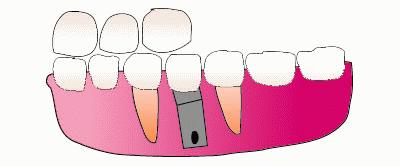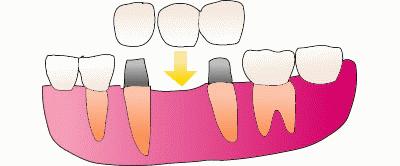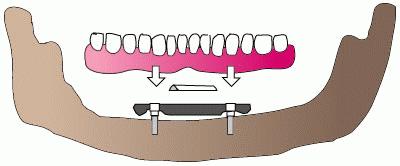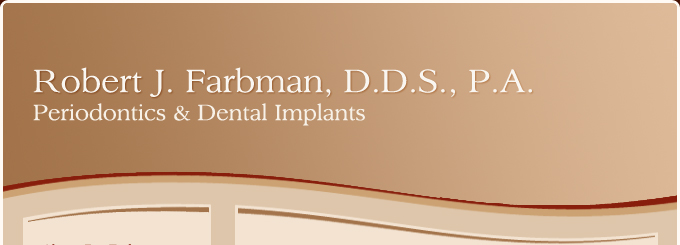
Dental Implants
The newest addition to your tooth replacement arsenal is the dental implant. While dental implants have been available for more than 25 years they have been recommended in increasing numbers over the last 10 years. Documented clinical studies have shown that this procedure is one of the most predictable in dentistry with success rates as high as 95%. General dentists are finding their ease of restoration and versatility very useful in all facets of tooth replacement. Patients benefit from regaining lost function.
Your dentist may have recommended dental implants for several reasons:
- Tooth loss due to disease
- Root canal failure
- Cracked tooth
- Loss of a bridge
- Painful and/or loose dentures or partials
The most common dental implants are those that resemble the root of natural teeth. They are also very versatile. Single tooth replacement is our most common request.


Previously, the choices available to the patient involved a removable appliance, the partial denture, or required adjacent teeth being cut down for bridgework. With single unit implant placement, your options are increased.
Another common use for dental implants is the stabilization of loose dentures. Full dentures cause a constant detioration in jawbone support, and eventually lead to "floating" dentures.

Not only does implant placement provide an anchor for the denture itself, but also the needed positive forces to keep the bone in place. There are several options for retaining dentures. Above, is one example of denture stabilization utilizing implants and clip bars.
The process for dental implant placement is quite simple. After x-rays have determined the size and location, a gentle surgical procedure allows for implant placement, which remains undisturbed for 2-5 months.
[Back]
